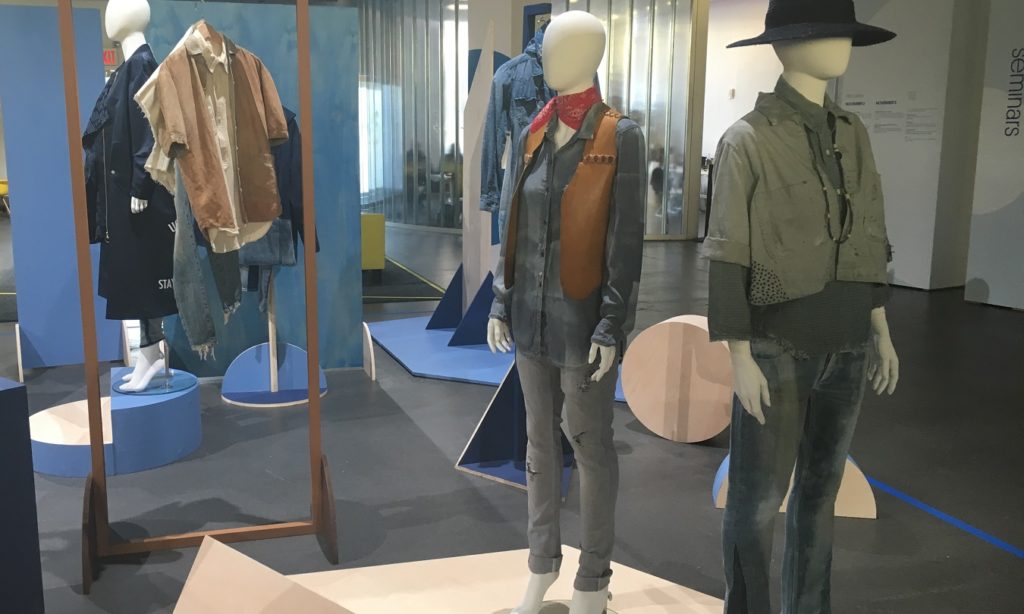
What’s New for S/S 18
This fall, the Lenzing Team crisscrossed their way across the globe (and in some cases, were in two place at once) to find the best denim has on offer for the Spring/Summer 2018 season.
Mills presented their seasonal updates in performance, sustainability and fashion at Kingpins Amsterdam (Oct. 26-27), Kingpins New York (Nov. 2-3) and Denim PV in Paris (Nov.2-3), and along the way, revealed some unforgettable innovations and trends.
Here’s a look at some of the highlights.
Kassim presented the “world’s first connected jean,” equipped with an open source microchip that can measure body temperature and humidity measurements. The mill also presented 3-D printed fabric containing indigo pigment.
While some mills focused on smart fabric, others presented smart looks. At Denim PV, Francois Girbaud presented the Tailored range exclusively through Naveena Denim Ltd., a collection of denim fabrics that resembled suitings. The sophisticated fabrics filled the gap left by wool, which appeared in fewer collections this season.
Indigo dominated the shows. The color spoke to designers inspired by the Kingpins x Denim Dudes trend presentation held in Amsterdam and New York. Amy Leverton of Denim Dudes said indigo denim with “TENCEL® shine” will be important in men’s and women’s collections for S/S 18, especially for items like culottes, lounge jeans, elongated shirts, kimonos and collarless styles.
TENCEL® was also part of Kingpins x Denim Dude’s trend installation. For the presentation’s Neue West trend story—a blend of garments with a modernized artisanal aesthetic—Leverton paired a TENCEL® chambray shirt with distressed skinnies, a kitschy leather vest and red bandana neckerchief.
Orta presented a new concept called Aerolight, a TENCEL® and Lenzing Modal® blend with lightweight and stretch benefits. The mill called it a “new era of denim—a fabric so light, fluid and luxurious that it can be layered and layered for functional, iconoclast style.” The ultra-light fabric also boasts strong recovery. Meanwhile, Toray tackled performance with a lightweight fabric made with Lenzing Modal® and nylon.
For shirting, mills went beyond the basics, keying into novelty textures. There were more blended fabrications and exploration in overdyed fabrics for some unique colors.
Mills achieved “modern vintage” looks with TENCEL® and cotton blends. Rigid with stretch fabrications were prominent—an answer to the market’s call for broken in, casual-feeling denim and a major trend for menswear. Orta featured denim with a vintage look using TENCEL® and cotton fabrics. Calik achieved the look with a soft hand using Lenzing Modal® and cotton fabrics.
Mills turned to Lenzing fibers to enhance their vintage denim stories and to support their sustainable concepts.
Calik presented Zero Cotton, which contains TENCEL® and Lenzing Modal®. The mill also showed fabrics using Lenzing Modal® BLACK, which uses only 20 percent of the pigment typically required with spun-dye fiber and 50 percent less energy.
Additionally Calik’s Denovated concept, based on the growing trends of open-end denim and salt and paper effects, used Lenzing Modal® fibers to enhance the softness of vintage-inspired denim looks.
US Denim touted 7-ounce fabric in their new Feather Light Collection. The line uses TENCEL®, Lenzing Modal®, cotton, PES and EA to achieve its lightweight and stretch properties. Orta also debuted a fabric containing recycled cotton and TENCEL® PES-EA.
In general, there was a trend toward the mechanical recycling of cotton denim. French spinner Filaturas du Parc produced yarn from recycled cotton for Orta. US Denim also featured post-consumer recycled cotton, TENCEL®, cotton, PES and Lycra in its new Green Ego Collection.
Soorty amplified its water saving techniques with Zero Water Blue. The concept reduces water consumption in fabric manufacturing by 90 percent.
Santanderina promoted various ecological dyeing processes, including Naturdye sourced from natural resources like nuts and leaves, and Vital, a process that reduces CO2 emissions by 33 percent and consumes 92 percent less water and 40 percent less energy than standard processes.
It remains to be seen which trends and innovations take off for S/S 18, but a brighter, cleaner and smarter future is in the cards for denim.






